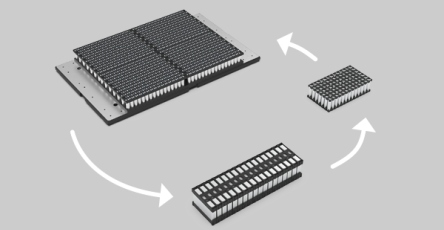Battery Laser Welding Machine
Fully automated or manually loaded, this laser welding machine can be integrated in high volume battery production lines. It can make cell-to-busbar connections for various battery-module and battery-pack designs.
With its unique engineering and vision that offers the fastest welding speed for batteries, this machine outperforms other laser welding solutions and has the ability to replace over 10 wire bonding machines with a single unit. As a complete solution, it offers advanced features to help you scale up production, including dynamic weld monitoring, vision, robot arms, and a large welding zone.







